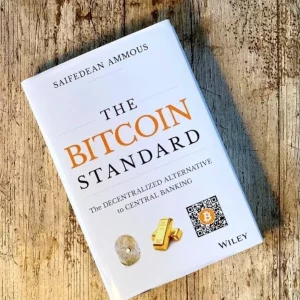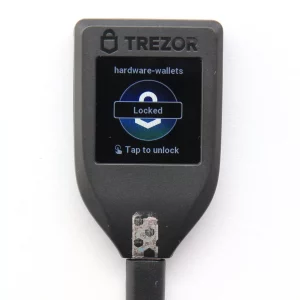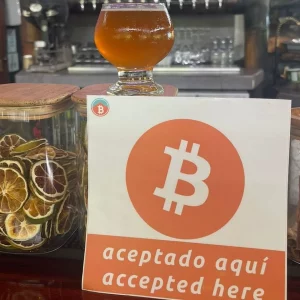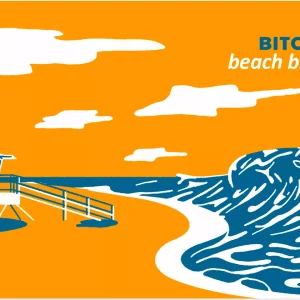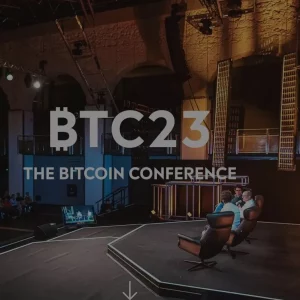The block size war refers to a contentious debate in the Bitcoin community in 2017 over the appropriate block size limit for the Bitcoin blockchain. The block size limit determines the maximum amount of data that can be included in each block of transactions on the blockchain.
In the early days of bitcoin, the block size was set at 1 MB, which limited the number of transactions that could be processed per second. As the popularity of Bitcoin grew, some members of the community argued that the block size should be increased to allow for more transactions per block and faster transaction processing times. Others argued that increasing the block size limit would lead to centralization and decreased security of the network.
The block size debate became heated and polarized, with different factions proposing various solutions such as a hard fork to increase the block size limit, or the implementation of a scaling solution such as Segregated Witness (SegWit) or the Lightning Network.
Ultimately, the debate resulted in hard fork of bitcoin, creating a new cryptocurrency called Bitcoin Cash with an increased block size limit of 8 MB. However, the original bitcoin network maintained its 1 MB block size limit and adopted the SegWit scaling solution.
Read more: What’s Segregated Witness (SegWit)?
The origin of blocksize war
The debate over the block size limit began in earnest in 2015, when a proposal to increase the limit to 2 MB was put forward by Bitcoin developer Gavin Andresen. However, the proposal was met with resistance from many in the community, who argued that increasing the block size limit would lead to centralization and compromise the security and decentralization of the network. The debate came to a head in 2017, when a group of Bitcoin companies and individuals put forward the controversial New York Agreement.
The New York Agreement (NYA) was a controversial proposal put forward in May 2017 by a group of Bitcoin companies and individuals at a closed-door meeting in New York. The proposal aimed to increase the block size limit from 1 MB to 2 MB through a hard fork of the Bitcoin protocol, and it was signed by more than 50 companies and individuals.
The NYA was highly controversial, as many in the Bitcoin community saw it as an attempt by a small group of companies to bypass the consensus-building process and force through a contentious change to the protocol. Opponents argued that the NYA would centralize control over the Bitcoin network and put too much power in the hands of a small group of companies and miners.
During the Bitcoin blocksize war, there were several arguments put forward by both sides of the debate. Below are some of the main arguments for and against increasing the block size:
Arguments for increasing the block size
- Scalability: Supporters of a larger block size argued that increasing the block size limit would allow more transactions to be processed per block, thus increasing the scalability of the Bitcoin network.
- Lower fees: With more transactions able to be processed per block, the fees associated with each transaction would be lower, making Bitcoin a more attractive payment option for users.
- Competitiveness: Some argued that Bitcoin needed to increase its block size to remain competitive with other cryptocurrencies that had larger block sizes, such as Bitcoin Cash.
Arguments against increasing the block size
- Centralization: Critics of a larger block size argued that increasing the block size would lead to centralization, as larger blocks would require more resources to process, potentially pricing out smaller miners and nodes.
- Security: With larger blocks, there was a risk of an increase in the number of orphaned blocks, which could lead to a decrease in the security of the Bitcoin network.
- Network fragmentation: An increase in the block size limit would result in a network split, as not all nodes and miners would upgrade to the new software version, leading to network fragmentation and potentially harming the Bitcoin ecosystem as a whole.
Individuals and organisations involved
During the blocksize war, there were several high-profile participants on both sides of the debate. Here are some of the most prominent figures and organizations involved:
Supporters of increasing the block size:
- Roger Ver, also known as “Bitcoin Jesus,” was a prominent Bitcoin investor and entrepreneur who was a vocal supporter of increasing the block size limit. He later became a leading figure in the Bitcoin Cash community.
- Gavin Andresen was a prominent Bitcoin developer and one of the earliest supporters of Bitcoin. He advocated for a block size increase and even proposed a code change that would have increased the block size limit to 20 MB.
- Bitmain is a China-based company that produces Bitcoin mining hardware. It was a major supporter of increasing the block size limit, and later became a driving force behind the creation of Bitcoin Cash.
- Mike Hearn was a former Google engineer who became a Bitcoin developer. He was a vocal supporter of increasing the block size limit and wrote a widely read blog post in 2016 in which he announced that he was leaving the Bitcoin project due to the scaling debate.
- Bitcoin Unlimited was a software project that aimed to increase the block size limit and provide miners with greater control over the Bitcoin protocol.
Opponents of increasing the block size:
- Adam Back is a prominent cypherpunk and the inventor of the hashcash proof-of-work system, which was later used in Bitcoin. He was a vocal opponent of increasing the block size limit, arguing that it would lead to centralization and harm the security of the network.
- Blockstream is a Bitcoin technology company that was founded by several prominent Bitcoin developers, including Adam Back. The company was a leading opponent of increasing the block size limit and instead advocated for the use of off-chain scaling solutions such as the Lightning Network.
- Peter Todd is a Bitcoin developer and security expert who was a vocal opponent of increasing the block size limit. He argued that a block size increase would harm the security of the network and that off-chain scaling solutions were a better option.
- Andreas Antonopoulos is a well-known Bitcoin educator, author, and speaker who was a vocal opponent of increasing the block size limit. He argued that a block size increase would harm the security and decentralization of the Bitcoin network.
- Eric Lombrozo is a Bitcoin developer and the co-founder of Ciphrex, a blockchain technology company. He was a vocal opponent of increasing the block size limit and advocated for the use of off-chain scaling solutions.
- The Bitcoin Core Development Team is a group of developers who contribute to the development of the Bitcoin protocol. The team was largely opposed to increasing the block size limit and instead advocated for the use of off-chain scaling solutions such as Segregated Witness (SegWit) and the Lightning Network.
Coinbase was one of the largest bitcoin exchanges at the time and had a significant stake in the outcome of the debate. The company initially supported an increase in the block size limit and even signed the controversial “New York Agreement” in 2017, which aimed to increase the block size limit to 2 MB. However, after the agreement fell apart and the community failed to reach a consensus on a block size increase, Coinbase shifted its stance and began supporting off-chain scaling solutions such as SegWit and the Lightning Network.
Who won the block size wars?
The resolution of the Bitcoin block size wars is widely seen as a triumph for the “small blockers.” Advocates of this camp argued vehemently for maintaining a restricted block size to safeguard decentralization and overall network security. Proponents of larger blocks, known as “large blockers,” pushed for an increase in block size to accommodate a higher volume of transactions.
Amidst the heated debates and conflicting viewpoints, the Bitcoin community eventually found common ground with the implementation of Segregated Witness (SegWit). This upgrade effectively augmented the block size by separating signature data from transaction data. Additionally, off-chain scaling mechanisms such as the Lightning Network gained momentum, providing avenues for faster and more cost-effective transactions without imposing substantial changes on the on-chain block size.
Find out more: What is segregated witness (SegWit)
During this period of intense discussion and negotiation, user-driven initiatives like the User Activated Soft Fork (UASF) emerged, enabling the community to influence protocol adjustments without relying solely on miners’ decisions. In response to the impasse, proponents advocating for larger blocks executed a hard fork of the Bitcoin blockchain, resulting in the creation of Bitcoin Cash, a cryptocurrency with a larger block size.
Ultimately, the core Bitcoin network opted to adhere to a limited block size while integrating SegWit, a decision aligned with the principles upheld by the small blockers. This outcome underscored the resilience of the Bitcoin community in navigating complex technical challenges while preserving the fundamental principles of decentralization and security.
The blocksize war was a complex and multifaceted debate, which highlighted the challenges of making changes to a decentralized network with no central authority, and the need for the Bitcoin community to work together to find solutions that balance efficiency, security, and decentralization.









